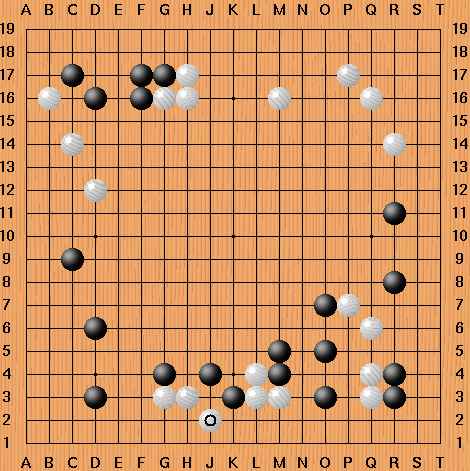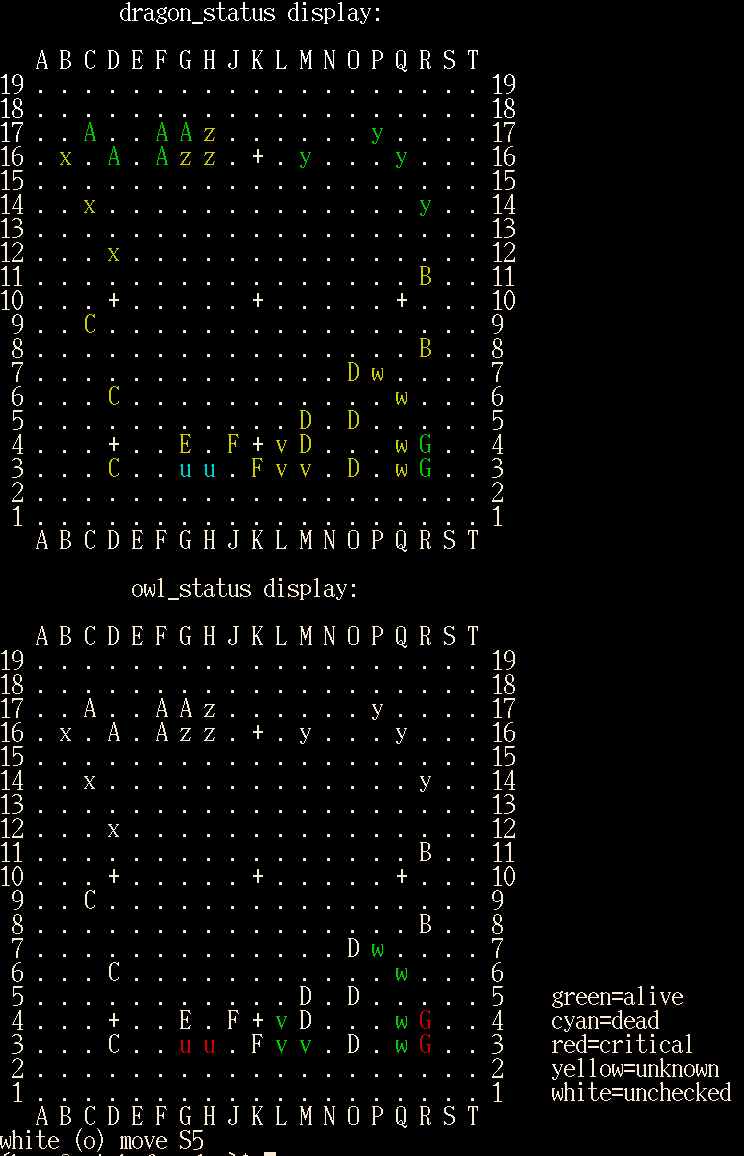
Since these examples will be fixed in 2.7.201, you may want to download gnugo-2.7.200 if you want to experiment with this position yourself. Here is an example of an error by GNU Go 2.7.200.

Here is the SGF file tune.sgf for this game.
There are many mistakes by GNU Go (white) in this game, but let's look at the situation at move 40. Clearly J2 is an error: the move at K2 would connect the two groups at the bottom.
Open an rxvt window and run
gnugo -l tune.sgf --quiet -L40 -T
to obtain the colored display:

This confirms that the G3 and L3 strings are not amalgamated, since they are assigned different letters u and v. They are considered distinct dragons (good).
Furthermore we see that the owl code has evaluated both of them, since they are colored in the second diagram, and that the owl code believes G3 to be critical (red) and H3 to be alive (green). One might argue with this assessment, but it shows that the object of connecting them will be highly valued by GNU Go.
But does GNU Go really understand that K2 will connect these dragons?
To find out, continue to the Next page.
Return to the GNU Go development page.
Please send comments on these web pages to webmasters@www.gnu.org, send other questions to gnu@gnu.org.
Copyright (C) 1999 Free Software Foundation, Inc., 59 Temple Place - Suite 330, Boston, MA 02111, USA
Verbatim copying and distribution of this entire article is permitted in any medium, provided this notice is preserved.
Updated: 1 Dec 2000 bump